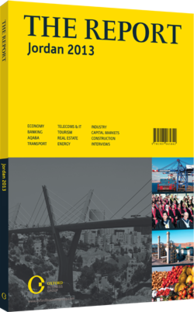Looking abroad: In an attempt to help spur growth, the focus is increasingly turning to European markets
Exports to Europe have been growing steadily in value terms over the medium to long term, although the bulk of Jordanian agricultural exports go to Arab states and the conflict in Syria has hindered sales to Eastern Europe. Jordan benefits from a number of advantages in supplying the European market, such as being able to grow crops year-round in the Jordan Valley, enabling it to fill seasonal gaps. Industry players say the key to boosting sales to the continent is to identify more such opportunities and to focus on high-value, niche products to compensate for relatively high production costs.
GROWING VALUE: The value of Jordanian agricultural exports to the EU stood at €20.7m in 2011, according to Eurostat. Although the great bulk of exports from the sector go to other Arab countries, sales of food, drinks and tobacco to the EU have been growing steadily over the long term, from around €6m in 2004 to €20m in 2011, and the authorities see the bloc as a market with major potential. “We want to leverage the EU-Jordan Association Agreement, in order to maximise the values of exports to these countries, and also make the most of the comparative advantages and competitiveness of vegetable crops,” Rami Al Habahbeh, the director of policies and studies at the Ministry of Agriculture, told OBG. Most farming exports to the EU are in the form of vegetables, sales of which stood at €15.5m in 2011, up from €14.7m in 2010. Among the major products are tomatoes, standing at €3.4m in 2011, up strongly from €2.5m in 2010, and cucumbers and gherkins, sales of which to the EU were €2.3m in 2011. The largest purchasers of Jordanian fruit and vegetables in 2011 were Hungary (accounting for €4.52m of exports), the UK (€4.31m) and Romania (€2.81m). Exports of food, drinks and tobacco to the bloc continued to rise in 2012 in value terms for the first 10 months of the year, to €18.57m, up 4.2% on the same period in 2011. However, this appears to have been driven in large part by higher prices, as exports by volume fell by around 39%, according to Eurostat data. Most of the fall was accounted for by a 41% contraction in fruit and vegetable exports, from 30,689 tonnes in the first 10 months of 2011 to 18,081 tonnes in the same period of 2012; exports to Romania fell particularly heavily. This may have been caused in large part by the conflict in neighbouring Syria given that exports to Eastern Europe are largely overland and Syria is Jordan’s only northern land export route (a transit agreement between Jordan and Iraq has yet to be implemented). The full impact of the conflict on the sector will become clearer in mid-spring 2013. “We need to look at the March to May period as that’s the main export season,” said Wael K Haddadin, who helps run Kareem Haddadin Farms, noting that the border was still open during the export season in spring 2012.
OPPORTUNITIES: Relatively few Jordanian farmers have the necessary accreditation to allow them to export to Europe, nor the equipment and technology to make it financially worthwhile, which helps to account for the low level of sales. However if these issues can be addressed, the country also benefits from a number of strengths that could support higher exports. The most important of these is the ability to produce goods when they are out of season in Europe. “We can still plant in winter in the Jordan Valley, whereas most European farmers cannot produce them,” Al Habahbeh told OBG. “For example, we can plant vegetables, tomatoes and other fruits in September and export from December to April, which is a huge advantage.”
Industry players say the country needs to look more at niche products if it is to boost sales. “Production in Jordan is expensive because of issues such as high labour costs, so Jordanian producers need to concentrate on high-quality niche products with high added value, and to find gaps in the market such as growing when there is low supply from elsewhere,” said Had-dadin, whose firm exports all of its produce via air to a number of Western European countries such as France and the UK. “We do this on a small scale but it needs to be replicated on a larger one across the sector.”
You have reached the limit of premium articles you can view for free.
Choose from the options below to purchase print or digital editions of our Reports. You can also purchase a website subscription giving you unlimited access to all of our Reports online for 12 months.
If you have already purchased this Report or have a website subscription, please login to continue.

